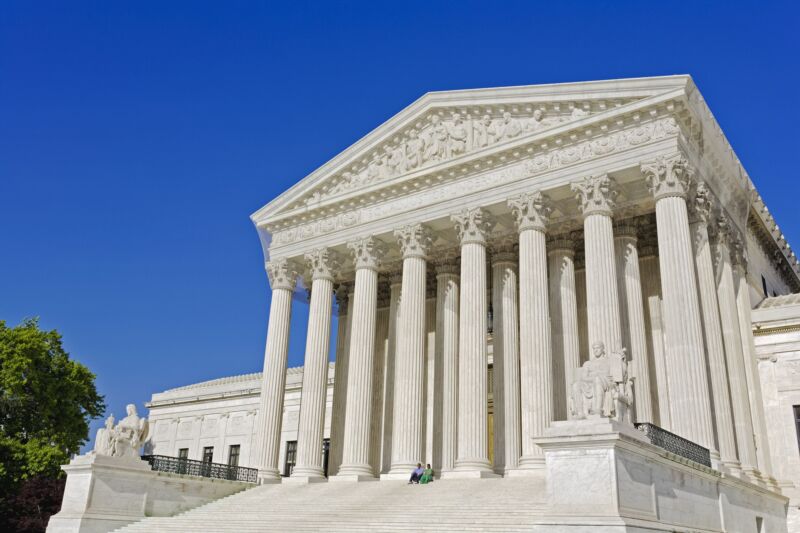
Getty Photos | Rudy Sulgan
This text initially appeared on Inside Local weather Information, a nonprofit, impartial information group that covers local weather, power, and the surroundings. It’s republished with permission. Join its e-newsletter right here.
Among the many many obstacles to enacting federal limits on local weather air pollution, none has been extra daunting than the Supreme Court docket. That’s the place the Obama administration’s efforts to manage energy plant emissions met their demise and the place the Biden administration’s makes an attempt will little question land.
A forthcoming research seeks to tell how courts take into account challenges to those rules by establishing as soon as and for all that the lawmakers who formed the Clear Air Act in 1970 knew scientists thought-about carbon dioxide an air pollutant, and that these elected officers had been intent on limiting its emissions.
The analysis, anticipated to be printed subsequent week within the journal Ecology Legislation Quarterly, delves deep into congressional archives to uncover what it calls a “wide-ranging and largely forgotten dialog between main scientists, high-level directors at federal businesses, members of Congress” and senior employees beneath Presidents Lyndon Johnson and Richard Nixon. That dialog detailed what had change into the broadly accepted science exhibiting that carbon dioxide air pollution from fossil fuels was accumulating within the ambiance and would finally heat the worldwide local weather.
The findings might have essential implications in gentle of a authorized doctrine the Supreme Court docket established when it struck down the Obama administration’s energy plant guidelines, mentioned Naomi Oreskes, a historical past of science professor at Harvard College and the research’s lead creator. That so-called “main questions” doctrine asserted that when courts hear challenges to rules with broad financial and political implications, they ought to think about lawmakers’ unique intent and the broader context through which laws was handed.
“The Supreme Court docket has implied that there’s no approach that the Clear Air Act might actually have been supposed to use to carbon dioxide as a result of Congress simply didn’t actually find out about this situation at the moment,” Oreskes mentioned. “We predict that our proof reveals that that’s false.”
The work started in 2013 after Oreskes arrived at Harvard, she mentioned, when a name from a colleague prompted the query of what Congress knew about local weather science within the Nineteen Sixties because it was growing Clear Air Act laws. She had already co-authored the guide Retailers of Doubt, concerning the efforts of industry-funded scientists to solid doubt concerning the dangers of tobacco and world warming, and was accustomed to the work of scientists learning local weather change within the Nineteen Fifties. “What I didn’t know,” she mentioned, “was how a lot that they had communicated that, significantly to Congress.”
Oreskes employed a researcher to start out trying, and what they each discovered stunned her. The proof they uncovered contains articles cataloged by the employees of the act’s chief architect, proceedings of scientific conferences attended by members of Congress, and correspondence with constituents and scientific advisers to Johnson and Nixon. The fabric included paperwork pertaining not solely to environmental champions but in addition to different distinguished members of Congress.
“These had been folks actually on the heart of energy,” Oreskes mentioned.
When Sen. Edmund Muskie, a Maine Democrat, launched the Clear Air Act of 1970, he warned his colleagues that unchecked air air pollution would proceed to “threaten irreversible atmospheric and climatic adjustments.” The brand new analysis reveals that his employees had collected reviews establishing the science behind his assertion. He and different senators had attended a 1966 convention that includes dialogue of carbon dioxide as a pollutant. At that convention, Wisconsin Sen. Gaylord Nelson warned about carbon dioxide air pollution from fossil gas combustion, which he mentioned “is believed to have drastic results on local weather.”
The paper additionally cites a 1969 letter to Sen. Henry “Scoop” Jackson of Washington from a constituent who had watched the poet Allen Ginsberg warning of melting polar ice caps and widespread world flooding on the Merv Griffin Present. The constituent was skeptical of the message, referred to as Ginsberg “certainly one of America’s premier kooks” and sought a correction of the file from the senator: “In any case, fairly a couple of million folks watch this present, folks of broadly various levels of intelligence, and the potential for this form of cost—even from an Allen Ginsberg—being accepted even partly, is harmful.”

